The Amazon Frogbit (Limnobium laevigatum), a native Central and South American floating freshwater plant, is lauded for its easy care, rapid growth, and beneficial attributes, including shading and aiding the nitrogen cycle in aquariums and ponds.
Its bright green, round leaves, resembling mini lily pads, have a waxy, water-repelling upper side and a buoyant spongy underside. Beneath the leaves, the plant’s fine roots provide a habitat for small aquatic species. While it can bloom small white flowers in optimal conditions, it primarily propagates through runners, enabling it to swiftly form a dense water surface canopy.
Related: View our latest Aquarium Plant Guides Here!
Table of Contents
Varieties Of Frogbit Plant
There are three main varieties of Amazon frogbit:
- Amazon frogbit (Limnobium laevigatum) is the most common variety. It has round, green leaves with a slightly fuzzy texture. The leaves are about 2 inches in diameter and are arranged in a rosette pattern. Amazon frogbit flowers are white and bloom in the summer.
- American frogbit (Hydrocharis morsus-ranae) is similar to Amazon frogbit, but it has heart-shaped leaves. The leaves are also slightly smaller than those of Amazon frogbit. American frogbit flowers are lavender and bloom in the summer.
- European frogbit (Lemna minor) is the smallest variety of frogbit. It has small, oval leaves that are about 1 inch in diameter. European frogbit flowers are white and bloom in the summer.
All three varieties of frogbit are easy to care for and make great additions to aquariums. They provide shade for fish and help to keep the water clean. Frogbit also helps to reduce algae growth.
Benefits Amazon Frogbit Bring to Your Aquarium
Amazon Frogbit, is a popular choice for aquarium enthusiasts due to the various benefits it offers:
- Shade: The dense growth of Frogbit provides a good amount of shade for the organisms in your aquarium, which can be beneficial for fish and other aquatic life that prefer less light or need hiding spots.
- Reduced Algae Growth: By absorbing excess nutrients in the water and blocking sunlight from reaching the bottom of the aquarium, Frogbit can help control the growth of algae.
- Aesthetic Appeal: Frogbit’s lily pad-like leaves and small white flowers (though flowers are rare in an aquarium setting) can add an attractive and natural look to your aquarium.
- Improved Water Quality: Frogbit is excellent at absorbing nitrate, ammonia, and other waste products, thereby improving the water quality and reducing the frequency of water changes.
- Oxygenation: Like all plants, Frogbit photosynthesizes, releasing oxygen into the water which is beneficial for fish and other aquatic life.
- Breeding Sites: Some species of fish like to use the underside of Frogbit leaves as a place to lay their eggs. The roots also provide a refuge for fry (baby fish).
- Food Source: Some aquatic creatures, like snails or certain types of fish, may eat Frogbit. The roots can also harbor microorganisms that can serve as food for some creatures.
Remember, while Frogbit has many benefits, it’s also a fast-growing plant that can cover the surface of your aquarium quickly. It’s important to manage its growth to ensure it doesn’t block out too much light for other plants or take over the entire surface, limiting gas exchange for your fish.
Frogbit vs Duckweed: What Are The Differences
Frogbit and Duckweed (Lemna minor) are both floating aquatic plants that are commonly used in aquariums and ponds. While they share certain similarities, they also have several differences that are worth considering if you’re deciding which to use in your own aquarium or pond.
Appearance – Frogbit is larger and more robust than Duckweed. Its leaves are round, bright green, and reminiscent of miniature water lily pads. They typically grow to about 0.5 to 2 inches in diameter. Frogbit also has long, feathery roots that dangle down into the water, providing cover for small fish and invertebrates.
On the other hand, Duckweed is much smaller. Each plant is usually composed of one to three fronds, or leaves, that are oval-shaped and no more than 0.25 inches (0.63 cm) in size. Duckweed has tiny, hair-like roots that hang down from each frond.
Growth Rate – Both Frogbit and Duckweed are known for their fast growth rates. However, Duckweed often grows faster than Frogbit and can quickly cover the surface of an aquarium or pond if not controlled.
Maintenance – Frogbit generally requires more maintenance than Duckweed. Its larger size means it needs more room to spread out, and it may need to be thinned out regularly to prevent it from covering the entire surface of the water.
Duckweed, being smaller, can tolerate more crowded conditions. However, because of its rapid growth rate, it can quickly become a nuisance if not kept in check. It’s also harder to remove completely from a tank or pond due to its tiny size.
Light and Nutrient Requirements – Both Frogbit and Duckweed require good lighting to thrive, and both are excellent at absorbing excess nutrients from the water. This makes them both good choices for helping to control nutrient levels and prevent algal blooms in your aquarium or pond.
Fish Interactions – Some fish species will eat Duckweed and can help control its growth. Fewer fish species will eat Frogbit, partly due to its larger size. The long roots of Frogbit provide a great hiding place for small fish, shrimp, and fry.

Amazon Frogbit Care and Tank Set-Up
Frogbit is a versatile plant that can grow in a variety of aquarium sizes, from small nano tanks to large pond-like settings. However, due to its rapid growth and the potential to cover the surface of the water completely, it’s best suited for medium to large aquariums.
Tank Size Requirements
The minimum tank size recommended for Frogbit would typically be about 10 gallons. This allows enough surface area for the plant to spread out without completely overtaking the tank too quickly. In larger tanks, Frogbit can create a beautiful and dense cover at the top, provided its growth is managed properly.
Tank Specifications
- Lighting: Frogbit prefers moderate to high light levels. Standard aquarium lighting should suffice, but ensure that the lighting isn’t too intense to avoid scorching the leaves.
- Water Parameters: The water temperature should ideally be between 64°F and 84°F (18°C and 29°C). The pH should be slightly acidic to neutral, ideally between 6.0 and 7.5.
- Water Movement: Frogbit prefers calm, still water. It does not do well with a lot of water movement or under filters that cause a lot of surface agitation.
- Substrate: As a floating plant, Frogbit does not require a substrate to grow.
- Fertilization: Frogbit absorbs nutrients from the water through its roots. Although it can often get enough nutrients from the waste products in your tank, it can benefit from a liquid aquarium plant fertilizer, especially in tanks with few fish.
- Maintenance: Regular thinning is necessary, especially in smaller tanks, to prevent the Frogbit from covering the entire water surface and blocking light for other plants and inhibiting gas exchange.
- Inhabitants: While Frogbit is compatible with most freshwater fish, some species like goldfish are known to eat Frogbit. Also, certain types of snails may eat or damage the plant.
Remember, while Amazon Frogbit is quite hardy and adaptable, providing the optimal tank conditions will ensure your plant thrives and provides the maximum benefits for your aquarium ecosystem.

Choosing Healthy Amazon Frogbit Plants
When you’re choosing Amazon Frogbit for your aquarium or pond, there are several factors you should consider to ensure you’re getting healthy plants. Here are some tips:
- Leaf Condition: Healthy Frogbit plants should have bright green leaves. If the leaves are yellowing, have brown spots, or appear wilted, the plant may be unhealthy. Avoid plants with significant portions of their leaves missing or damaged.
- Root Health: Check the roots of the Frogbit. They should be relatively long and feathery. If the roots are short, discolored, or appear rotten, the plant may be unhealthy.
- Pests and Parasites: Examine the plants for signs of pests or parasites. Look for snails, insects, or other organisms that might be hiding in the roots or on the underside of the leaves. Also, check for signs of algae growth on the plant.
- Foul Smell: If the Frogbit or the water it’s being kept in smells bad, it could be a sign that the plant is rotting or diseased.
- No Flowers: While Frogbit does flower in optimal conditions, flowering is rare, especially for plants kept in aquariums. If a Frogbit plant is flowering, it may be a sign that it was grown in a pond or outdoor environment. These plants might have a harder time adapting to life in an aquarium.
- General Vigor: Healthy Frogbit plants should appear vibrant and robust. If the plants look weak or lethargic, they may not be in good health.
Remember, even with careful selection, newly introduced plants can sometimes introduce disease or parasites into your aquarium. It’s generally a good idea to quarantine new plants for a week or two and/or treat them with a mild bleach or potassium permanganate solution to kill off any potential hitchhikers. Always rinse well before introducing them to your main aquarium.
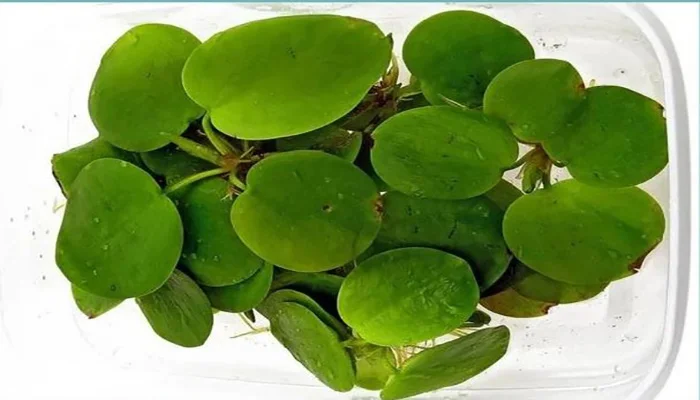
Planting Your Amazon Frogbit
Amazon Frogbit is a floating plant, meaning that its planting technique differs from other rooted aquatic plants. Its roots hang down into the water, absorbing nutrients directly from the water column. Propagation is a breeze as you simply drop your Frogbit into your aquarium and watch the magic happen.
Here are some simple steps on how to introduce and propagate Amazon Frogbit in your aquarium:
- Quarantine: If possible, quarantine new Frogbit plants for a couple of weeks before introducing them to your main aquarium. This helps ensure they’re not carrying any diseases or pests that could harm your other aquatic life. If you skip this step, consider treating the plants with a mild bleach or potassium permanganate solution and rinse well to eliminate potential hitchhikers.
- Acclimation: Just like fish, plants benefit from acclimation to new water conditions. Float the bag (or container) the Frogbit came in on the surface of your aquarium water for about 15-30 minutes, allowing the plant to adjust to your tank’s temperature.
- Placement: After acclimation, gently place the Frogbit on the water surface of your aquarium. Ensure the leaves are facing up and the roots are hanging down into the water. Avoid submerging the leaves as this can cause rot.
- Avoid Water Movement: Position the Frogbit in a calm part of your aquarium. Excessive water movement or filter splashing can damage the plant and cause leaf rot.
- Lighting and Fertilization: Guarantee the plant receives adequate lighting. Consider adding a liquid fertilizer to the water to provide necessary nutrients, especially in tanks with few fish.
- Maintenance and Pruning: Regularly check your Frogbit for signs of disease or stress, such as yellowing leaves or stunted growth. Trim off any dead or dying material to maintain plant health and prevent decay from affecting your water quality. If Frogbit starts covering your entire aquarium surface, remove some plants to let light reach other aquatic plants and ensure adequate gas exchange at the water surface.
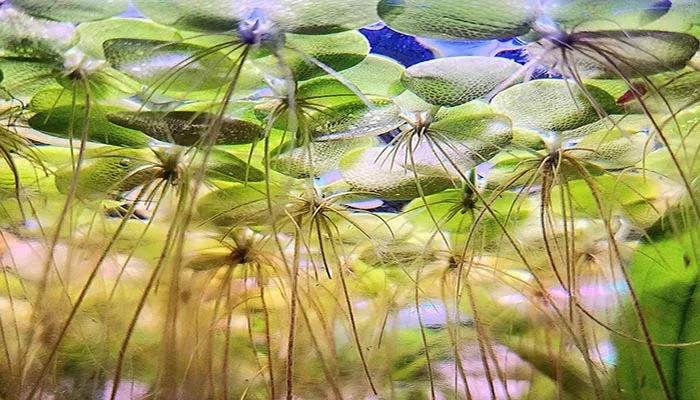
How to Propagate Frogbit
Propagation of Amazon Frogbit, a process also known as stem fragmentation, is relatively straightforward as the plant naturally reproduces itself. Here are five simple steps to help walk you through the process.
Step 1: Identify a Healthy “Mother” Plant
Find a healthy “Mother” plant, characterized by vibrant green leaves and robust roots. This plant should ideally be larger and mature, as these are typically the ones to send out runners, or stolons, for reproduction.
Step 2: Look For the Stolons
Examine the plant for stolons, long stem-like structures that extend from the mother plant. At the end of these stolons, small buds or daughter plants, often called plantlets or ramets, start to form.
Step 3: Allow Daughter Plants to Develop
Wait until the ramets have developed a few leaves and roots of their own. This indicates that they’re ready to survive independently.
Step 4: Separation
Using a pair of plant or aquarium scissors, gently cut the stolon near the base of the ramet. Be careful not to damage the roots or leaves of the new plant during this process.
Step 5: Free Floating
After separation, the new plantlets can be left to float freely on the surface of the water. They’ll continue to grow and eventually produce their own stolons, repeating the stem fragmentation process.
Remember to ensure that your Frogbit is receiving adequate light and nutrients to encourage healthy growth and propagation. If your tank has a lid, make sure that the humidity and heat don’t build up excessively as this can damage the plant.

Related: View our latest Aquarium Plant Guides Here!
Tank Mates: Plants and Creatures
Plants:
- Anubias: This plant can thrive under the lower light conditions that occur under a Frogbit canopy.
- Java Fern: Another low-light tolerant plant that can coexist nicely with Frogbit.
- Mosses: Various types of moss, such as Java Moss or Christmas Moss, can do well in the shaded areas under Frogbit.
Creatures:
- Small Fish: Small, peaceful fish like Neon Tetras, Guppies, and Mollies are good choices as they won’t damage the Frogbit.
- Shrimps: Species like Cherry Shrimp and Amano Shrimp can coexist well with Frogbit, and will also benefit from the cover provided by its roots. Shrimps love to hang upside down and the Frogbit is an ideal plant for them to indulge in their favorite hobby.
- Snails: Some snails, like Nerite Snails and Mystery Snails, can coexist well with Frogbit, though some species may eat or damage the plant.Avoid keeping Frogbit with larger, herbivorous fish like Goldfish and Cichlids, which may eat the plant. Also, make sure to provide enough open water surface for species that require it for breathing or feeding, like Bettas and Gouramis.
Keeping Frogbit with larger, herbivorous fish like Goldfish and Cichlids, may eat the plant and create a mess but don’t lets this put you off. It’s a healthy snack for them.
Also, make sure to provide enough open water surface for species that require it for breathing or feeding, like Bettas and Gouramis.

Amazon Frogbite Care Guide – Let’s Summarize
Water Conditions
- Maintain a water temperature between 64°F and 84°F (18°C – 29°C).
- Ensure a pH level between 6.0 and 7.5.
Lighting
- Provide moderate to high lighting for optimal growth.
Leaf Care
- Keep the leaves dry to prevent rot. Avoid areas with splashing water.
Pruning and Propagation
- Regularly prune the plants to control growth and maintain health.
- Propagate by identifying a healthy “Mother” plant, look for daughter plants on the stolons, and separate using plant scissors.
Water Flow
- Use a low flow filter or a baffle to reduce water surface agitation.
Nutrients
- Provide liquid fertilizer rich in nitrogen and phosphorus, especially in tanks without fish.
Pest Control
- Monitor for pests like snails or insects and remove if necessary.
Tank Mates
- Avoid tank mates that may eat or damage the plant, like large herbivorous fish.
Tank Environment
- Ensure enough open water surface for gas exchange and light penetration to the lower parts of the tank.
Amazon Frogbit is a versatile and easy-to-care-for floating plant that can add beauty and function to your aquarium. Its lush green leaves provide shade and its roots offer shelter and foraging grounds for fish and invertebrates.
Despite its rapid growth, regular pruning keeps it manageable. Additionally, its ability to absorb excess nutrients helps in maintaining water quality, controlling algae growth.
With proper lighting, nutrient supply, and care, Frogbit can become a thriving part of your aquarium ecosystem. Its simple propagation makes it an excellent choice for both novice and experienced aquarium hobbyists.
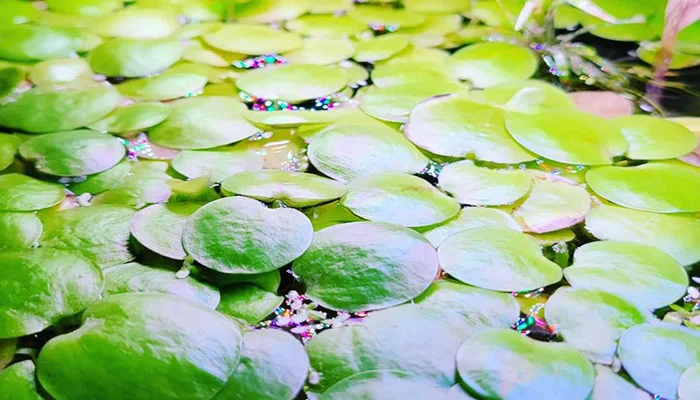
Frogbit FAQ
Why is my Frogbit turning brown?
Amazon Frogbit can turn brown due to several reasons, including inadequate lighting, nutrient deficiencies, or poor water quality. Overcrowding can also cause this as it blocks light to the lower leaves. Moreover, if the leaves get wet, possibly from splashing or submersion, they may start to rot and turn brown. Addressing these issues and ensuring proper care will help in maintaining the health and vibrancy of your Frogbit.
Is the Amazon Frogbit poisonous?
No, Amazon Frogbit (Limnobium laevigatum) is not poisonous. It is a safe plant for both humans and most aquatic creatures, including fish, snails, and shrimp, and is often used in home aquariums to improve the environment and provide shelter for aquatic inhabitants.
Does the Amazon Frogbit flower?
Yes, Amazon Frogbit can produce small, white, three-petaled flowers. However, flowering is rare in aquarium conditions and more common in outdoor ponds or in its natural habitat with abundant sunlight.
How much light does Frogbit need?
Amazon Frogbit prefers moderate to high light conditions. However, it’s adaptable and can survive in low light as well. Too little light can stunt growth, while excessive light might cause leaf burn. Balanced lighting promotes healthy growth.
Is the Amazon Frogbit invasive?
Yes, Amazon Frogbit can become invasive in non-native environments due to its rapid growth rate and reproductive abilities. It can quickly cover water surfaces, outcompeting native plants and altering habitats. Therefore, its release into wild ecosystems is discouraged.
Is The Amazon Frogbit banned in the US?
Amazon Frogbit is considered an invasive species and is banned in some U.S. states, including California, due to its potential to harm local ecosystems. It is also listed as a noxious weed in Washington state. Additionally, it may be restricted in other regions around the world. It’s always a good idea to check the current local regulations before purchasing or transporting any plant species.
More Reading

15 Types of Cryptocoryne: Which is Best For Your Aquarium Setup?

16 Awesome Low Light Aquarium Plants (Mosses, Ferns & Stem Plants)


18 Types of Aquarium Moss: Photos, Care, Propagation & Growth Guide
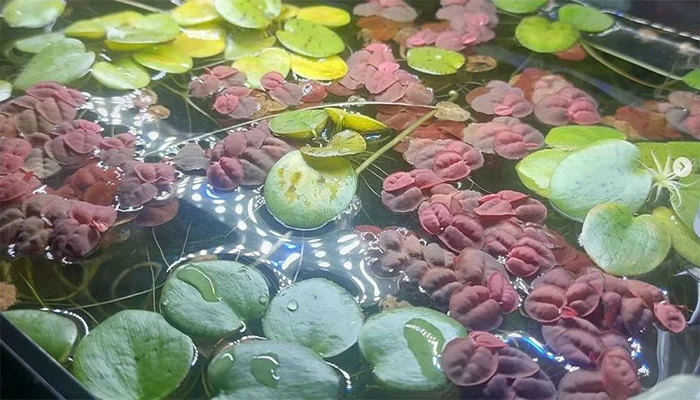
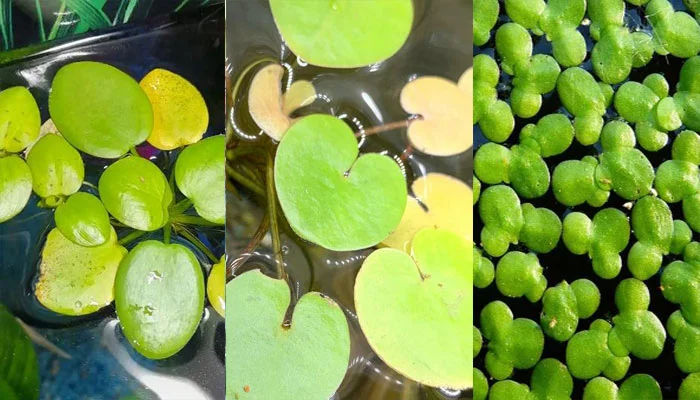
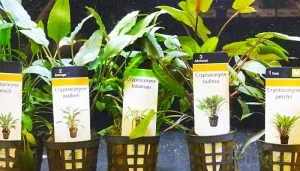
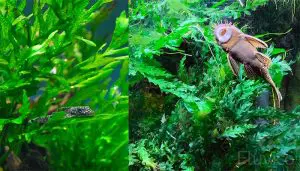
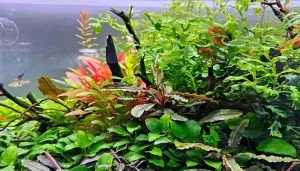
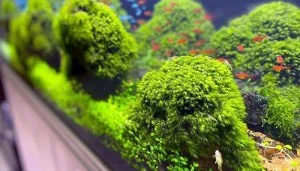
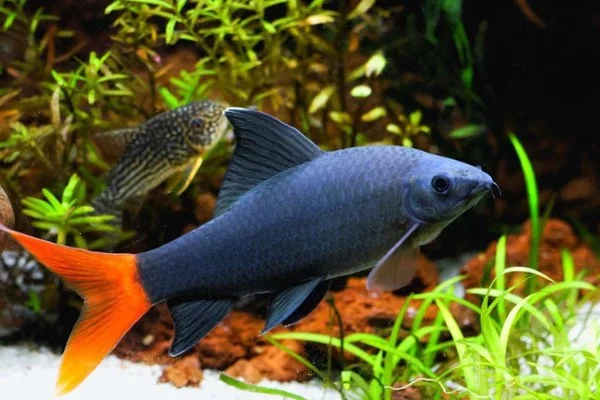
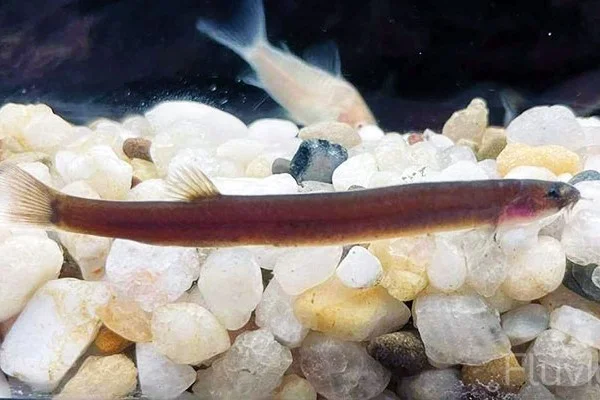
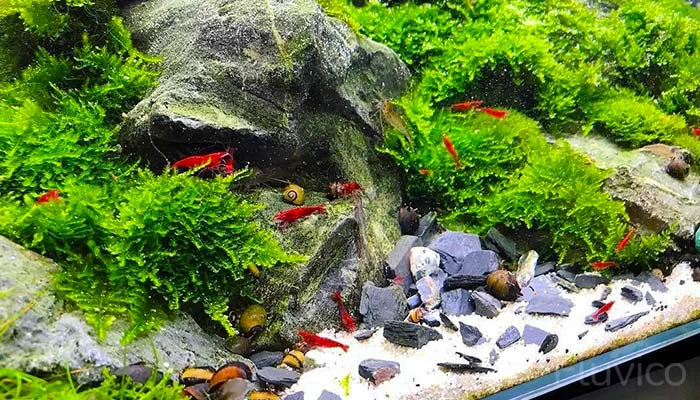
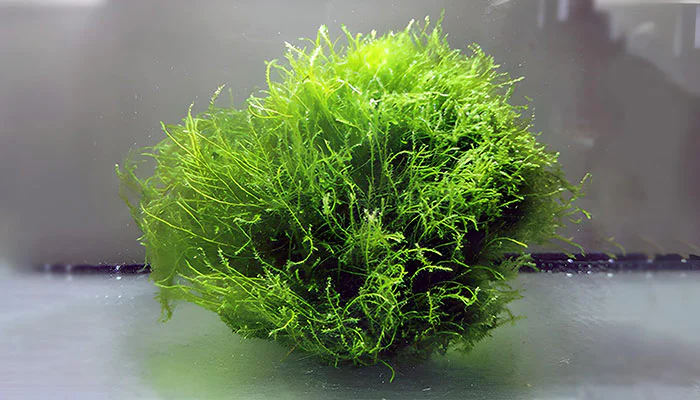
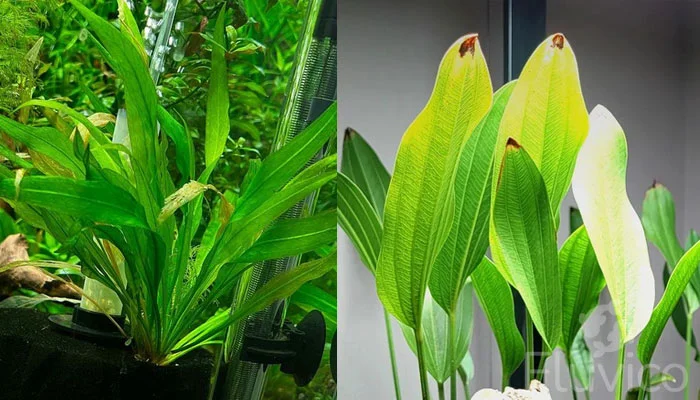
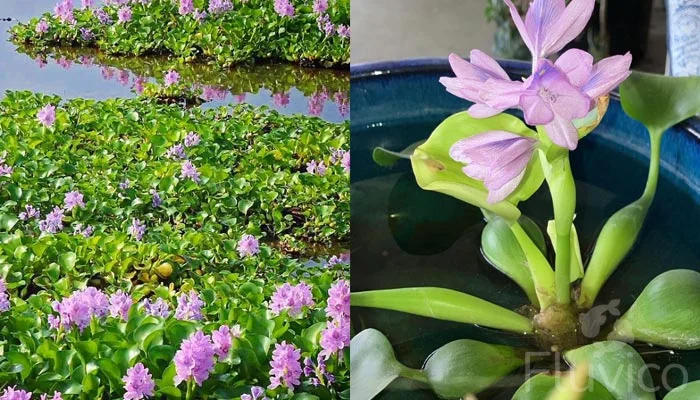
Hope you enjoyed our Amazon Frogbit Care Guide! As always if you have any questions or tips of your own, comment below.
All the best,
Charlie